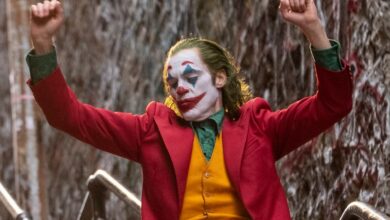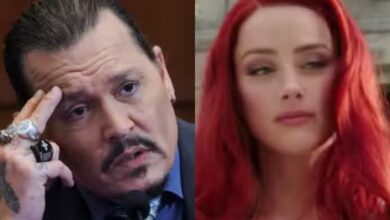How Super Mario Bros doomed video-game movies for a generation

Asked if he had any regrets in his career, Bob Hoskins didn’t hesitate. “The worst thing I ever did? Super Mario Bros,” the actor said. “It was a f***in’ nightmare. It had a husband-and-wife team directing, whose arrogance had been mistaken for talent.”
He was speaking in 2007, 14 years after starring in the notoriously dysfunctional take on the hit Nintendo video game. And yet the tremor in his voice had been unmistakable. Hoskins had graced the occasional turkey across his decades in the industry. Super Mario Bros was clearly a different class of clunker. He sounded more than slightly scarred by the experience.
Video game adaptations are so ubiquitous nowadays that we tend not to even think of them in those terms any more. The recent Detective Pikachu was received as a surreal kids comedy starring Ryan Reynolds. Last year’s Rampage was sold as a vehicle for Dwayne Johnson rather than a bid to revitalise an obscure Eighties arcade title.
Similarly, the imminent arrival of Netflix’s retelling of The Witcher saga is perceived as the streaming kingpin’s attempt to carve out its own Game of Thrones. But, in fact, the new series, starring Henry Cavill as titular anti-hero Geralt of Rivia, comes to us in the shadow of CD Projekt Red’s best-selling trilogy of console romps.
True, the makers of the TV show have insisted their Witcher is based on the original Andrzej Sapkowski novels. Nonetheless, Cavill is known to be a fan of the games and his monster hunter “Witcher” clearly emulates CD Projekt Red’s vision of Geralt. Moreover, the pre-existing fanbase Netflix is seeking to tap is self-evidently that of the games rather than the books (largely a cult affair outside of Sapkowski’s native Poland).
In the early Nineties, however, the relationship between Hollywood and the gaming industry was very different. Video games were regarded as a distraction for children and not something in which it was necessarily appropriate for grown-ups to take an interest. They occupied the bottom rung today reserved for movies based on popular toys.
But that hadn’t prevented Nintendo from letting it be known it was open to bringing its brightest blockbuster, the Super Mario series, to the screen. A Super Mario Bros film undoubtedly made sense: the games were action packed, brimming with visual humour and slapstick fun. What’s more, the plot, in which moustache-sporting siblings Mario and Luigi set off to rescue Princess Daisy from dastardly King Koopa, felt perfect for kids.
So how did this straightforward premise end up as the bizarre and, frankly, disturbing Super Mario Bros movie? More Cronenberg than Donkey Kong, it imagined a secret city underneath New York where the dinosaurs have taken refuge after an asteroid struck Earth (“Dinohattan”). And instead of the bouncy Mario, Luigi and Koopa, it set the odd-couple pairing of Bob Hoskins and John Leguizamo against Dennis Hopper, reprising the maniacal energy he had brought to David Lynch’s Blue Velvet. The surprise ultimately wasn’t that Super Mario Bros brought in just $20m (£15m). It was that anyone saw it at all.
“It doesn’t know what kind of movie it wants to be,” wrote Adam Bertocci in a recent appraisal of Super Mario Bros published on fanzine Smbmovie.com. “It’s a kiddie movie sometimes, a weirdo cult comedy at others, part dark sci-fi, part wacky-ass romp, and the disparate elements collide like bumper cars when they ought to resolve into a satisfying whole. Plot threads never quite congeal, and stray ideas stick out like sore thumbs on reptiles that somehow evolved them.”
In hindsight, it seems almost inevitable that the film would be a shambles. Rather than pair up with a bigger studio, Nintendo had opted to partner with fledgling mogul Roland Joffe. The director of The Killing Fields and The Mission was looking to get into producing. He convinced Nintendo to entrust him with Super Mario after granting it exclusive merchandising rights (which a bigger studio would have refused).
His pitch to Nintendo executives in Kyoto centred on the idea of a “darker” Mario universe. This was to be as much for adults as children. Nintendo’s logic was that Super Mario was such a commercial juggernaut that a big-screen version wouldn’t really impact much either way. Why not dip a toe and see what transpired? “They looked at the movie as some sort of strange creature, [intrigued] to see if it could walk or not,” said Joffe at the time.
The plan initially was to cast Dustin Hoffman as Mario. He would be working from a script by Barry Morrow, who had won an Oscar for Rain Man. Morrow’s treatment presented the relationship between plumber siblings Mario and Luigi as a fraught psychological affair (it was dubbed “Drainman” by the crew). This was ultimately judged too bleak; meanwhile, the president of Nintendo North America expressed reservations about casting method-man Hoffman
Next Tom Hanks negotiated a $5m (£3.8m) deal to star, but then Joffe and his team blanched. The feeling was that Hanks was asking for too much given that he was coming off a string of flops (most recently Bonfire of the Vanities). Eventually, the script – a new, frothier one by Flintstones writers Jim Jennewein and Tom S Parker – found its way to Bob Hoskins.
He had some experience of children’s movies with 1988’s Who Framed Roger Rabbit? And with recent turns opposite Cher in Mermaids and Robin Williams in Hook, the gruff north Londoner was warming to the idea of becoming a Hollywood star. He had no idea Super Mario Bros was adapted from a video game – his seven-year-old son later filled him in – but signed on enthusiastically.
“I’m the right shape,” he joked at the time. “I’ve got a moustache. I worked as a plumber’s apprentice for about three weeks and set the plumber’s boots on fire with a blowtorch.”
As his younger brother, John Leguizamo was perceived as a safe pick. He was an up-and-coming heartthrob, who had grown up in a tough neighbourhood in Queens. This made him perfect given that the (new) script pitched Mario and Luigi as rough at-the-edges New Yorkers.
The biggest headache was casting “big bad” King Koopa. Arnold Schwarzenegger turned Joffe down, as did Michael Keaton. In the end, Dennis Hopper signed on, intrigued by Jennewein and Parker’s kid-friendly screenplay. Fiona Shaw was to play his sidekick Lena.
Overseeing it all would be fledgling husband and wife directors Rocky Morton and Annabel Jankel. They’d been hired on the strength of their work on Channel 4 future satire Max Headroom. When they arrived at the sprawling five-story set at Castle Hayne, North Carolina, their first act was to throw out most of the script and steer the project in a bleaker direction.
They were, above all, keen to dispense with most of the Super Mario elements of Super Mario Bros. The look they envisaged was supremely gritty: closer to Blade Runner than the bright, bouncy Nintendo aesthetic.





